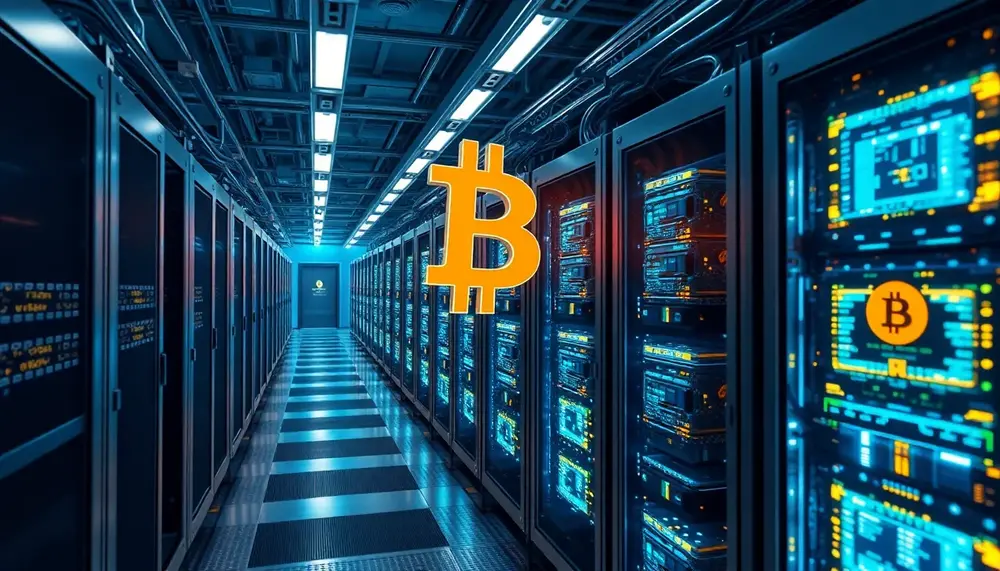Table of Contents:
Introduction to Cryptocurrency Mining
So, you're curious about cryptocurrency mining, huh? Well, let's dive right in! Imagine a world where digital money isn't controlled by banks or governments. That's where crypto comes in. Mining is like the magic wand that keeps this world spinning. It's the process that ensures transactions are legit and keeps everything secure.
Now, you might wonder, how does it work? Picture a giant digital ledger, called the blockchain. Miners are like the scribes, recording every transaction in this ledger. They solve complex puzzles to add new pages, or blocks, to the ledger. And guess what? For their hard work, they get rewarded with shiny new coins!
Get $500 free Bitcoin mining for a free testing phase:
- Real daily rewards
- 1 full month of testing
- No strings attached
If you choose to buy after testing, you can keep your mining rewards and receive up to 20% bonus on top.
But it's not just about the coins. Mining is the heart of the decentralized network. It keeps everything fair and square, preventing anyone from spending the same coin twice. Without miners, the whole system would be like a house of cards, ready to tumble.
In a nutshell, cryptocurrency mining is the unsung hero of the digital currency world. It's a fascinating blend of technology, economics, and a bit of luck. So, if you're ready to explore this intriguing universe, buckle up! There's a lot more to discover.
Decoding Mining Difficulty
Alright, let's crack open the concept of mining difficulty. Imagine you're trying to solve a puzzle, but every time you get close, someone makes it harder. That's mining difficulty for you! It's like a game where the rules keep changing to keep things interesting.
Why does this happen? Well, the network wants to make sure that new blocks are added at a steady pace. If miners are solving puzzles too quickly, the difficulty ramps up. If they're taking too long, it eases off. It's a bit like adjusting the thermostat to keep the room just right.
Now, how does this affect miners? It's a bit of a rollercoaster. When difficulty goes up, miners need more power and better equipment to stay in the game. It's like running a race where the finish line keeps moving further away. On the flip side, when difficulty drops, it's a bit of a breather for miners, making it easier to earn rewards.
So, in the grand scheme of things, mining difficulty is a balancing act. It keeps the network secure and ensures that blocks are added at a predictable rate. It's a dynamic dance that miners must navigate, adapting to the ever-changing landscape of the crypto world.
FAQ on Cryptocurrency Mining Essentials
What is cryptocurrency mining?
Cryptocurrency mining is the process of adding transaction records to a public ledger known as the blockchain. Miners solve complex computational problems to validate transactions, ensuring decentralization and security in digital currencies like Bitcoin.
Why does mining difficulty change?
Mining difficulty adjusts approximately every 2,016 blocks to ensure a stable block production rate of one every ten minutes. It varies to match the total computational power of the network, keeping the system balanced and consistent.
What rewards do miners receive?
Miners are rewarded with bitcoins for each new block they successfully add to the blockchain, along with transaction fees from included transactions. The current block reward is 3.125 bitcoins and halves approximately every four years.
What types of mining hardware are used?
Mining hardware has evolved from CPUs to more efficient GPUs and FPGAs, and now, ASICs dominate Bitcoin mining due to their superior performance. Different cryptocurrencies may require specific hardware types.
Are there alternatives to proof-of-work?
Yes, alternative consensus mechanisms to proof-of-work include Proof-of-Stake (PoS), Delegated Proof-of-Stake (DPoS), and Proof-of-Space (PoS), each offering a unique way to confirm transactions and ensure network security.






